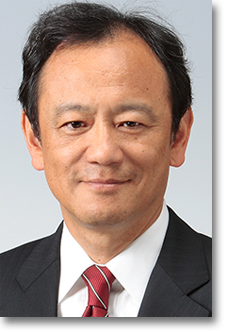Toyota Commits $50M to Research AI for Autonomous Vehicles and “Future Mobility”

Establishes collaborative research centers with MIT and Stanford to accelerate artificial intelligence research and broaden its focus on computer science and human-machine interaction with an immediate goal of reducing highway injuries and fatalities.
The research and development of intelligent vehicle and mobility technologies will get a major boost in an ambitious new collaboration between Toyota, Stanford and MIT.
At a press conference today, Toyota Motor Corporation (TMC) announced that it will be investing approximately $50 million over the next 5 years to establish joint research centers at each university.
Additionally Dr. Gill Pratt, former Program Manager at DARPA (the Defense Advanced Research Projects Agency) and leader of its recent Robotics Challenge, has joined Toyota to direct and accelerate these research activities and their application to intelligent vehicles and robotics.
As we age, mobility becomes more challenging; and larger segments of society are unable to drive or move freely.
Also, the demands on healthcare systems and those who support the physically infirm continue to increase.
Toyota believes the opportunities to improve every-day living through artificial intelligence supported technologies are boundless, with significant breakthrough potential for the development of life-saving intelligent vehicles and life-improving robots.
Kiyotaka Ise, TMC Senior Managing Officer and Chief Officer, R&D Group, said: “We’re here today to mark the beginning of an unprecedented commitment. We will initially focus on the acceleration of intelligent vehicle technology, with the immediate goal of helping eliminate traffic casualties and the ultimate goal of helping improve quality of life through enhanced mobility and robotics. This partnership, led by Dr. Pratt, is a great opportunity to work with two leading research teams from two top universities. I am very excited about what this new venture means for Toyota, and I look forward to more announcements in the future.”

Dr. Gill Pratt said, “This bold collaboration will address extremely complex mobility challenges using ground breaking artificial intelligence research. I’m thrilled to be a part of the synergies and talent-sharing of Toyota, MIT, and Stanford. Key program areas will be addressed by the two university campuses and Toyota, with combined research targeted at improving the ability of intelligent vehicle technologies to recognize objects around the vehicle in diverse environments, provide elevated judgment of surrounding conditions, and safely collaborate with vehicle occupants, other vehicles, and pedestrians. The joint research will also look at applications of the same technology to human-interactive robotics and information service.”
Research at MIT will be led by Professor Daniela Rus, Andrew (1956) and Erna Viterbi Professor of Electrical Engineering and Computer Science and Director of the Institute’s Computer Science and Artificial Intelligence Laboratory (CSAIL). “Our team will collaborate with Stanford and Toyota to develop advanced architectures that allow cars to better perceive and navigate their surroundings in order to make safe driving decisions,” said Professor Rus. “These efforts will play a major role in helping reduce traffic casualties, and potentially even helping us develop a vehicle incapable of getting into a collision.”
Led by Professor Fei-Fei Li, Director of the Stanford Artificial Intelligence Laboratory (SAIL), the Stanford-based research center will collaborate with MIT and Toyota to develop advanced intelligent systems to recognize, understand and act in complex traffic environments. “Building on Stanford’s expertise with computer vision, machine learning, large-scale data analysis and human-computer interaction, our team will work to help intelligent vehicles recognize objects in the road, predict behaviors of things and people, and make safe and smart driving decisions under diverse conditions,” said Professor Li.
Beyond Toyota’s longstanding work on autonomous vehicles and advanced driving support systems, the company has been developing robots for industrial use since the 1970s, and for Partner and Human Support Robot applications since the 2000s. This collaborative effort will open up new avenues for systems and product development across a broad range of mobility applications.
Related: While No Cure-All, Possibility of Driverless Trucks Offers Hope for Truck Driver Crisis

Article Topics
DHL Supply Chain News & Resources
Orchestration: The Future of Supply Chain Port of Baltimore Could Reopen in May, Says DHL Executive DHL Express and Standard Chartered to Cut Carbon Emissions DHL Supply Chain Deploys Cobot to Optimize Picking Process Hitting the Right Notes in the Supply Chain Supply Chain Digitalization Trends for 2024 and Beyond DHL Supply Chain and AutoStore announce partnership expansion More DHL Supply ChainLatest in Technology
South Korea Finally Overtakes China in Goods Exported to U.S. SAP Unveils New AI-Driven Supply Chain Innovations U.S. Manufacturing is Growing but Employment Not Keeping Pace The Two Most Important Factors in Last-Mile Delivery Spotlight Startup: Cart.com is Reimagining Logistics Walmart and Swisslog Expand Partnership with New Texas Facility Taking Stock of Today’s Robotics Market and What the Future Holds More Technology












